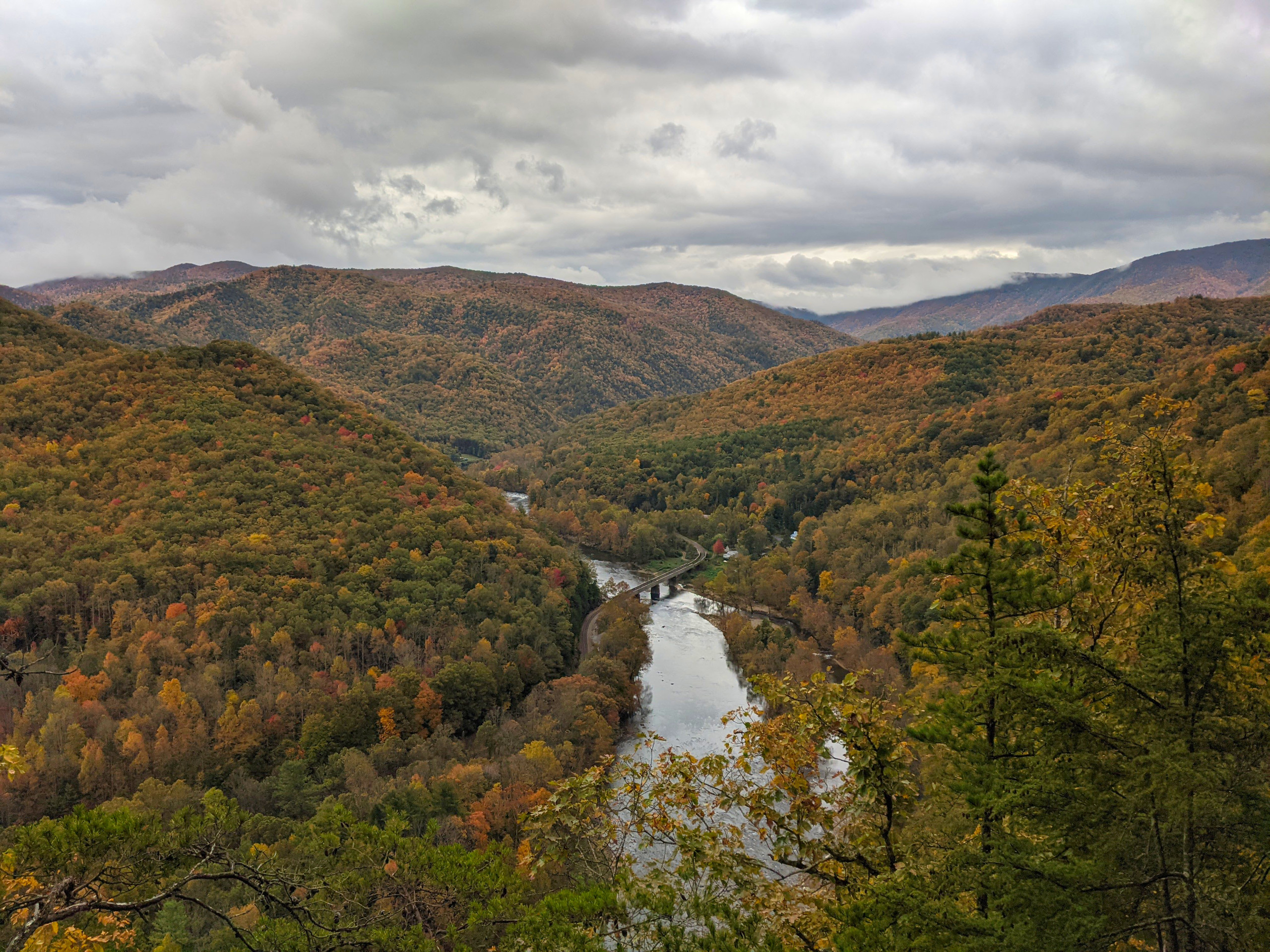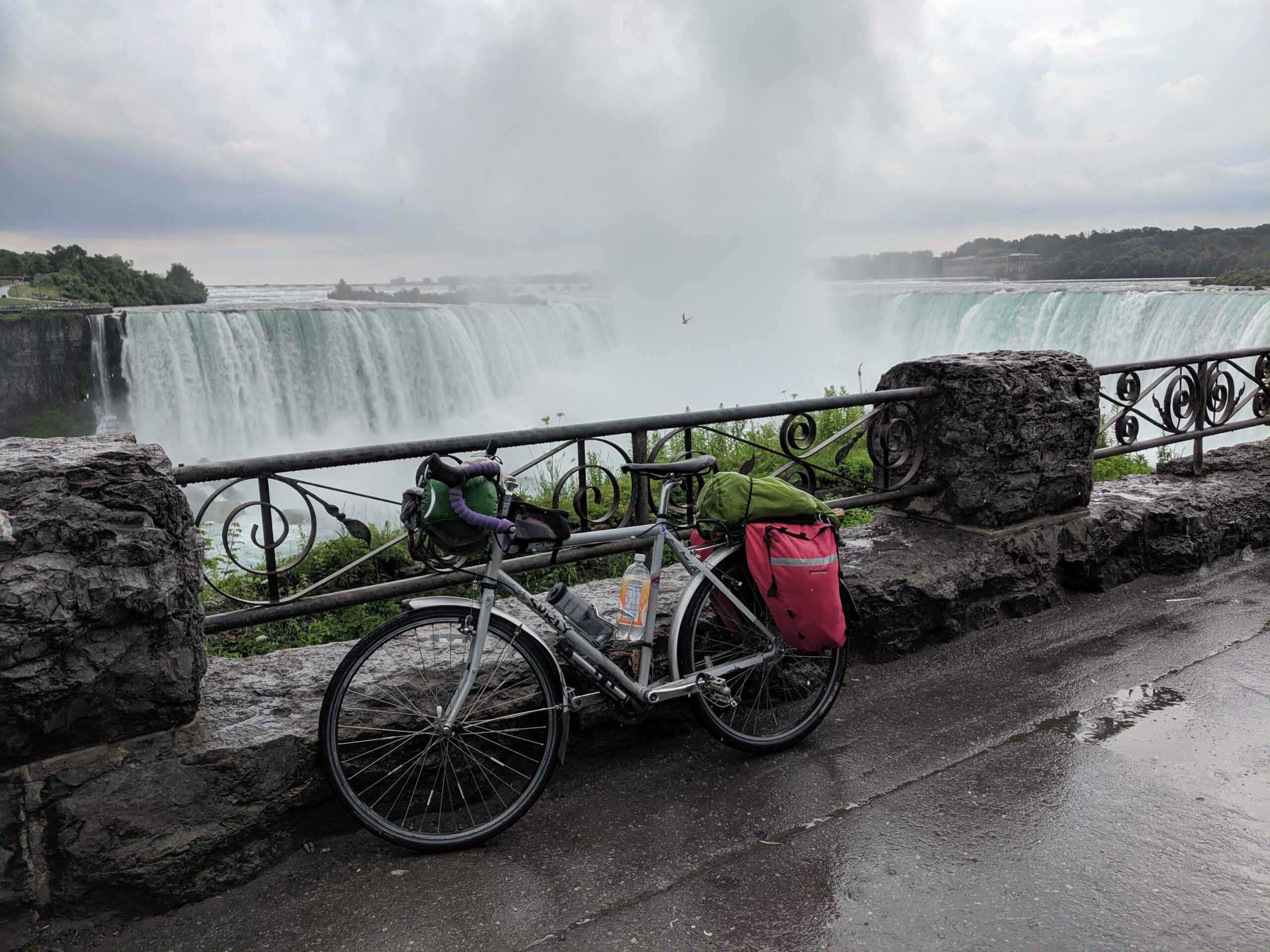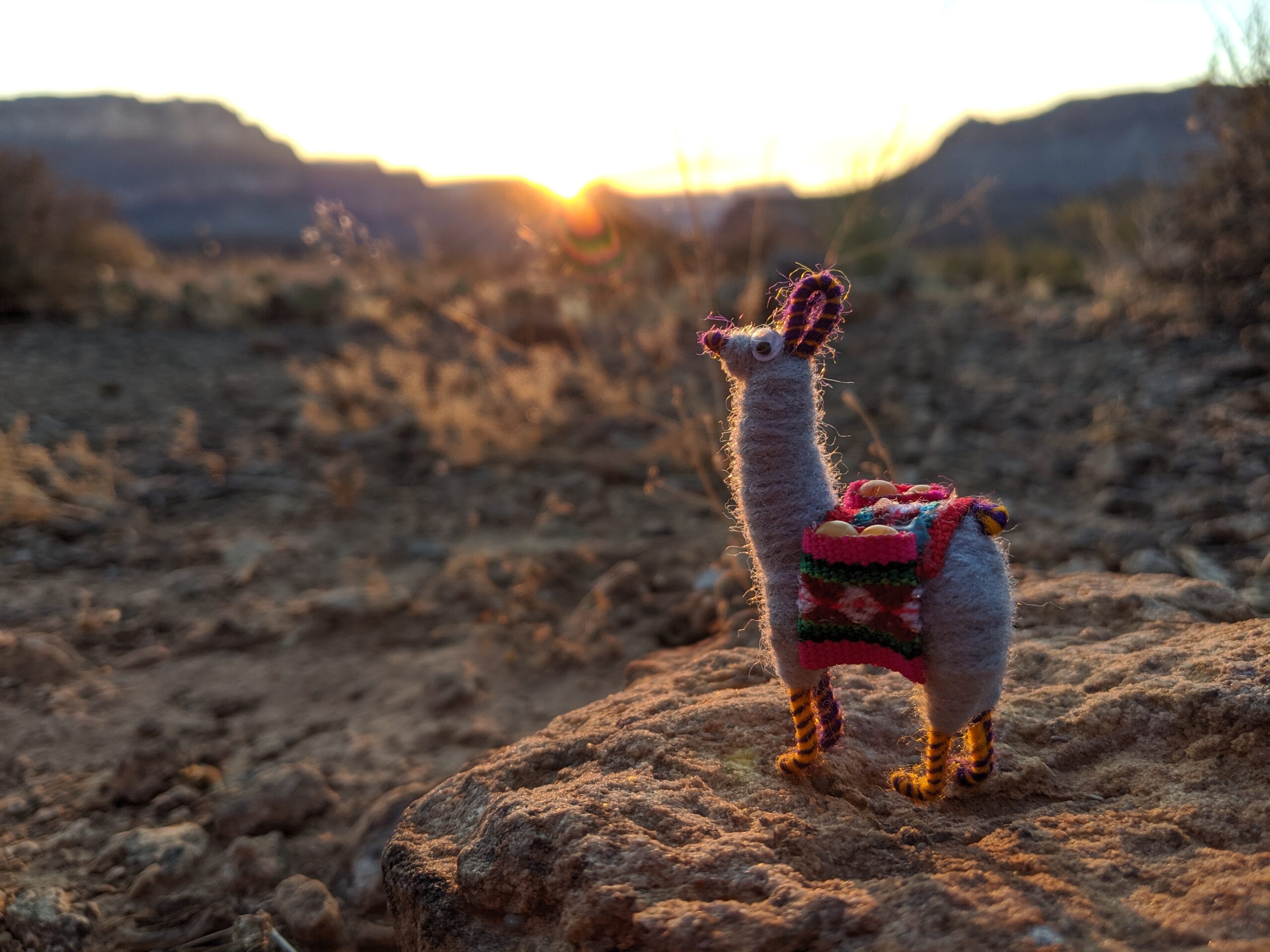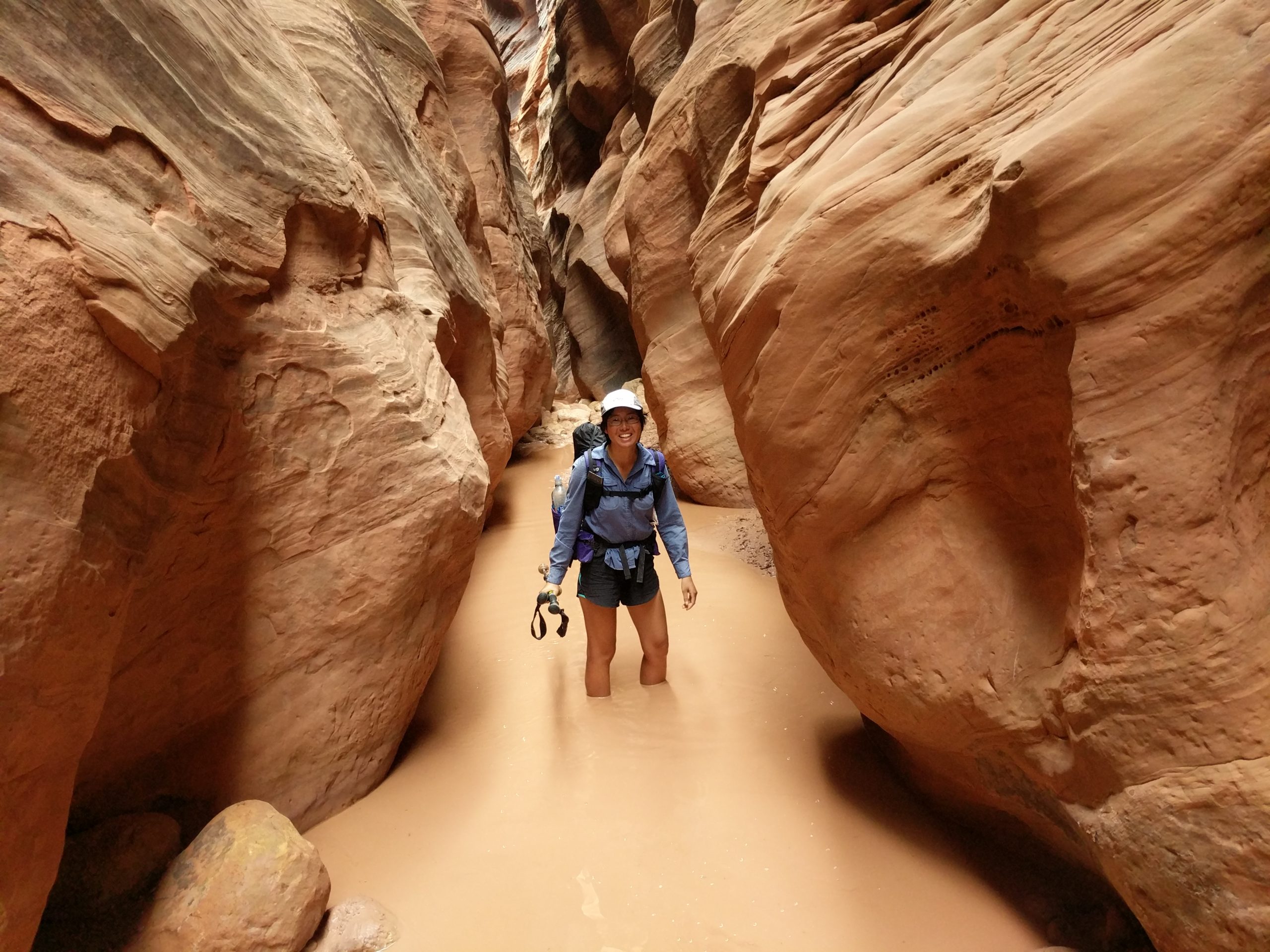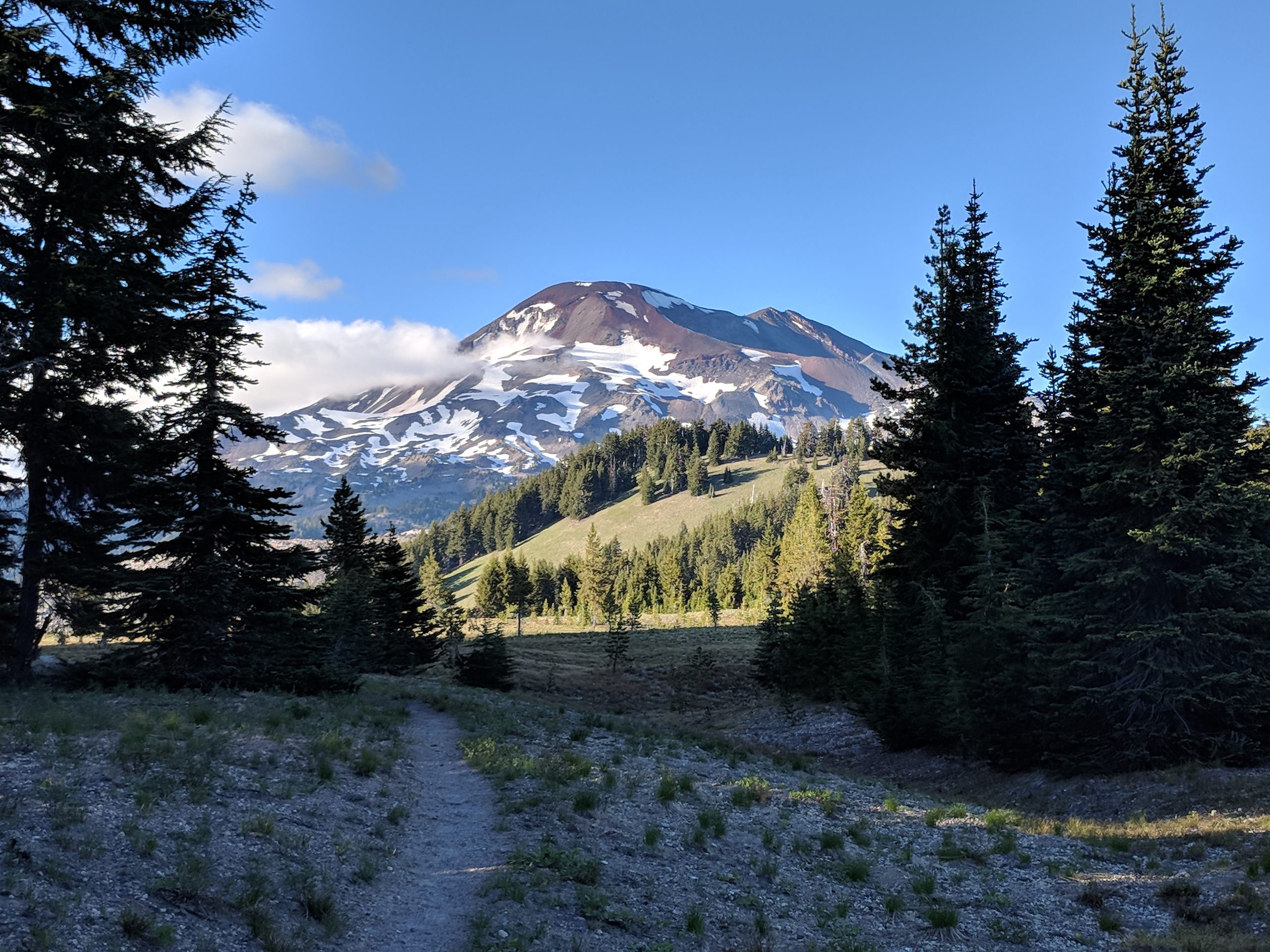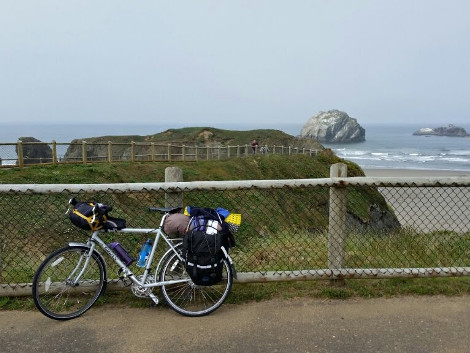Hiking in New Zealand was my genius idea to avoid another gray, drizzly Oregon winter by having a second summer. It worked beautifully, except that I forgot I would be having a second allergy season. Also, thanks to the vagaries of Earth’s orbit, the ozone layer, and its (lack of) pollution, New Zealand’s summer UV levels are 40% higher than at similar latitudes up north. I burned immediately, spent most of the hike swaddled in long layers, and came home with tan lines like a raccoon.
Getting into NZ is relatively easy if you stay for under 90 days, in which case you don’t need to apply for a real visa in advance. My original plan was to hike both islands extremely quickly during these three months, but after buying my plane ticket and belatedly researching the trail, I realized that the northern half is not very good. I decided to focus on hiking the South Island at a more relaxed pace, going northbound to give the snowier regions more time to melt. Then I had a couple extra weeks to be a normal tourist on the North Island and see the highlights without having to walk to them.
Before I started Te Araroa proper, I spent a week on Stewart Island hiking the Northwest Circuit. Stewart Island isn’t officially included in the TA due to its unreliable weather, but it’s a stunning addition and supplied the only visible wild kiwis of my trip.
Huts
On Stewart Island, I found out about New Zealand’s luxurious and extensive hut system. The huts (unlimited use with a permit) were fully enclosed, clean, and modern. They were equipped with porches, latching doors, screened windows, wood stoves, bunks with squishy mattresses, gear drying racks, tables, chairs, rain water barrels, and sinks with faucets. Often there were also cooking supplies, a stack of books or magazines, or leftover food from other hikers.
Once I started hiking the actual TA, I found out that Stewart Island’s huts are not representative, and most huts are much smaller and far more rustic with significantly fewer amenities (or else you have to book/pay for them separately from the permit). But, with only a couple exceptions, I still preferred them to camping outside, which is more than I can say about the Appalachian Trail’s lean-tos (barring a downpour). Better yet, I did not hear about anyone getting murdered in any of them.
Logistics
Finances
Even excluding airfare, the TA was an expensive hike, largely because I was tired of stealth camping on the edges of towns and stayed in hostels instead. The hostels were typically all but fully booked by the time I showed up, so I had to pay for whatever was still available. And then there were all the tourist activities and side trips, which have not generally been a temptation on my other hikes. Otherwise, I thought prices were reasonable after you convert NZ dollars into a much smaller number of US dollars, and especially since you don’t tip at restaurants.
People in New Zealand use something called EFTPOS to pay for things, which I gather is similar to a debit card. Meanwhile, I paid with a normal Visa credit card, which was fine online but was startling and confusing to everyone in real life. They would scramble around wildly searching for a pen so I could sign for every purchase, and because of their compulsion to get a signed receipt, I was not allowed to use self-checkout at grocery stores. Sometimes it took multiple people to work my credit card, sometimes nobody could figure it out, sometimes I checked my account after a particularly fraught payment and saw I got double charged.
Carry cash, and carry a lot of it. If you stay in quaint older hostels, sometimes they turn out to be cash-only (even if you booked online using your credit card) but they won’t trouble you with this information until after you’ve arrived and the nearest ATM might as well be in Australia for all you want to go and walk to it.
Gear
Be prepared for rain and mud(!) but also for blazing sun. Be prepared for sandflies; I don’t remember using my headnet but they like to go for ankles, so make sure you can seal up gaps. I carried a single trekking pole to help navigate steep terrain and river crossings. I also wore gaiters to help shield my socks from pointy seeds and keep my shoelaces from getting caught and untying on brush. They may have helped keep my shoes from suctioning off in the mud as well.
My gear list included a couple extra items. You are almost always expected to provide your own towel and soap/shampoo (tip: use a shampoo bar; Ethique is based in NZ and is easy to find in stores). I also carried a UL daypack for switching to tourist mode.
I may have been the only person in the country not carrying camp shoes, which wasn’t a big deal to me but meant socks or bare feet inside huts.
If you’re planning to do any tourist activities, I highly recommend wearing a wool blend shirt instead of 100% synthetic. This isn’t usually a major consideration, but I cringe at the memory of sitting next to normal, non-stinky people on public transit.
Food
I didn’t mail any boxes. NZ has poste restante, but it’s not as good as America’s general delivery because they start charging you if it takes you longer than a week to pick up. But mainly I hate having to plan ahead around business hours. I did hitch into Hanmer Springs and into Nelson and most of my resupplies were okay, albeit sometimes expensive. The gas station in St. Arnaud had a memorably haphazard inventory and my diet afterwards was more creative than usual for the next several days.
My overall food strategy was similar in NZ and America, in that I did not cook or coldsoak and ate things out of wrappers and Ziplocs. It just took some trial and error to figure out what to buy. As a Crystal Light junkie, I was devastated to discover that drink mix is all but nonexistent, as were my morale-boosting Snickers bars and string cheeses. I was also startled to encounter kilojoules instead of calories, but because labels tell you the ratio of kilojoules to grams, comparing stats on food items was a breeze.
The foundation of my diet was a jar of peanut butter, into which I poured trail mix (“scroggin”) and then ate with a wooden popsicle stick serving as a spoon. (This was partly because it was small enough to be stored inside the jar, and partly because disposable cutlery does not exist in New Zealand. I carelessly tossed my plastic spoon from the airplane and spent the next few weeks trying in vain to find a replacement before giving up.)
Stoveless hiking has not caught on in New Zealand and most people cooked hot breakfast as well as dinner, making my peanut butter meals something of a spectacle of horror around the hut tables.
Hiking
When New Zealanders decide to build a nice trail, they build some of the nicest trail I’ve ever seen. They install elaborate swingbridges instead of making you wade across streams. Every boardwalk is lovingly covered in some manner of grippy plastic matting or chickenwire. The Appalachian Trail could learn a thing or two.
However, much of the TA is not built or maintained to this standard. Besides the mud, there were memorable stretches lined with lush clumps of floppy, slippery grass that obscured the trail and made every step a tripping hazard. Sometimes the grass concealed sharp pointy plants which stabbed you when you slid into them. Parts of the route consist of following the bottom of a waterway, which may be cold, deep, slippery, unnervingly fast, or occasionally impassable. There may be a high-water alternate that might seem better, but turns out to be miserably steep and/or overgrown with thorny shrubs and/or full of false starts and dead ends. Pick your poison and don’t expect to make fast progress. (I gave up converting kilometers into miles because it was too discouraging.)
As always, oncoming hikers are a great source of fearmongering but terrible source of information, second only to the gossip on Facebook groups.
On that note, the trail on the South Island has three officially-sanctioned discontinuities at the Lake Wakatipu, Rangitata, and Rakaia hazard zones. I walked every kilometer of the trail, including the terrible parts most people skip or rent bicycles for, but I hitched/shuttled the hazard zones and regret nothing. Pretty much every southbounder I met had forded the Rangitata without difficulty and told me to do it too, and then a few days after I hitched around, an unlucky hiker got stuck in the middle of it when it suddenly flooded and had to be rescued. I’m glad it wasn’t me. (It took five hitches and most of the day, but I also got to have a meat pie, ice cream, and soda in the process.)
Recommendations
Unfortunately, the best scenery was often in the most popular, accessible areas (and often not part of the TA), and the remote areas off the beaten track tended to be more frustrating and less rewarding. So it’s worth doing touristy side trips while you’re in town and detouring to popular trails. Some of my top suggestions:
- Fly into Dunedin so you can visit the world’s only mainland breeding colony of albatross. They also claim to have the steepest street in the world and it’s a lovely city to relax in for a few days. From there, you can take a bus to Invercargill. There is no need to linger in Invercargill.
- Take the ferry to Stewart Island to hike the Northwest Circuit (if weather permits) and visit the bird sanctuary on Ulva Island.
- Take a daytrip to Milford Sound from Te Anau. (Obviously you should do the Milford Track if you can get a permit, which I could not.)
- Hike the Routeburn Track (much easier to get permit) which conveniently connects to the TA via the Caples/Greenstone tracks.
- Hitch into Aoraki/Mt. Cook National Park. Hike the Hooker Valley track and the Mueller Hut track. Do not drop your only trekking pole off a swingbridge into the raging glacial river below before tackling the 2200 stairs of the latter.
- Stay a little longer in Arthur’s Pass and dayhike Avalanche Peak.
- If you make the trip into Nelson to resupply, Abel Tasman National Park is an easy, scenic side trip (assuming you enjoy golden sandy beaches).
- If you aren’t hiking the TA through the North Island, it sounded like the main on-trail highlights are the Tongariro Alpine Crossing (which was inside a cloud when I was there, but is probably usually worth it) and the Timberline Trail (which you can rent a mountain bike to ride and was incredible). Otherwise, the aftermath of Cyclone Gabrielle limited where I felt good about imposing myself, so I stuck to Wellington, Rotorua, and Auckland, plus stops at the Hamilton Gardens, Waitomo glowworm caves, and Hobbiton.
Hazards
- One of my first truly novel experiences in New Zealand was getting electrocuted by a fence, which I accomplished within an hour of leaving the southern terminus. Assume every fence is electric, because most of them probably are.
- Sheep are generally not hazardous but sheep farms (“stations”) are muddy and poopy and full of horrible stinging plants you must wade through. Long pants will help, but not as much as you would hope. The trail is usually very poorly marked, the GPS tracks are wildly incorrect, and it’s easy to find yourself on the wrong side of an (electric) fence. These will be very slow, very unpleasant miles.
- Coastal cities are plagued by silver gulls. Don’t eat outside if they are around. I was mobbed, landed on, and my food was snatched at. Outside of cities, you can also get dive bombed by colonies of black-fronted terns.
- Instead of developing any intuition about the reversed directions of traffic, my brain gave up entirely. Cars seemed likely to appear in any direction, possibly even overhead. This made crossing the street much more reckless than usual.
- Drivers in New Zealand seem to be much less friendly towards roadwalkers than drivers in America and generally do not move over in the slightest, even when the road is perfectly empty and straight. (However, hitching was easy and it goes without saying that Kiwis themselves are kind, lovely people with the most adorable accents.)
